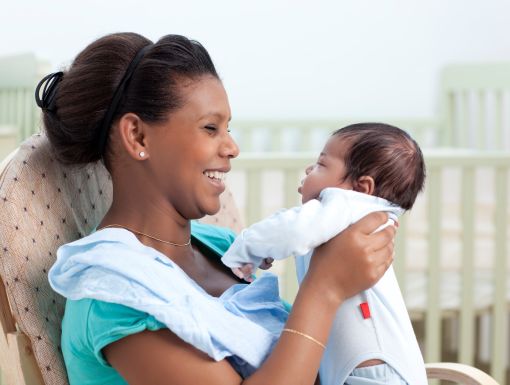
5 Common Conditions in Infants and How to Handle Them to Ease Your Worry
Why are they crying? Why aren't they crying? Is that a rash? Are they okay?
It’s normal for parents to question everything and worry incessantly — it’s practically part of the job description. And that’s when baby is perfectly healthy. Never mind when a health issue arises. But from colic and cradle cap to ear infections and even jaundice, there are some common conditions that just come with being a baby. Don't worry. We've got your plan of action right here.
Colic
Everyone knows that babies cry. A lot. But if your baby cries for more than three hours per day, three or more days per week, it might be colic.
Colic is the term used for otherwise healthy babies who cry inconsolably. There’s no single cause, however, experts believe the following can contribute to colic: pain from gas or indigestion, hunger, feeling full, sensitivity to milk or formula and overstimulation. In other cases, it simply means your baby isn’t able to self-console yet.
What to do: Talk to your doctor about colic. They will want to rule out other issues first. If it is colic, it typically resolves on its own by four months. In the meantime, try:
- Avoiding potentially irritating foods such as milk products, caffeine, onions and cabbage if you are breastfeeding.
- Switching formula brands.
- Being careful not to overfeed.
- Laying baby face down across your knees and rubbing the back.
- Gas drops as needed to settle your baby's stomach.
When to worry: Call your doctor if inconsolable crying comes on suddenly or is paired with fever, vomiting, bloody stools or decreased movement.
Sick Baby? Schedule Now.
Get in to see a pediatrician quickly with Ochsner's same-day scheduling option. And if it's an emergency, know that our pediatric ER is available 24/7.
Cradle Cap
Cradle cap is a common rash marked by redness and scaling on your little one’s scalp that typically develops in the first weeks of life. It can also appear in other areas, including the neck, armpits, behind the ears and diaper areas.
What to do: Most cradle cap goes away gradually after several weeks. Shampoo as usual, if not a little more often. Rubbing mineral oil or coconut oil on the scalp and brushing with a fine-tooth comb can also help.
When to worry: Cradle cap that migrates to other areas of the body is called seborrheic dermatitis. Most of the time, it is harmless. However, seborrheic dermatitis that appears increases in your baby’s skin can lead to yeast infections. Call the doctor if affected areas become very red or irritated.
Ear Infection
More common in children than adults, ear infections are one of the top reasons for pediatrician visits. The No. 1 symptom is ear pain, but since your baby can’t tell you when it hurts, look for:
- Pulling at the ear
- Crying and fussiness
- Fever
- Trouble sleeping
- Fluid drainage
- Difficulty hearing
What to do: Doctors cannot diagnose ear infections over the phone, so if you suspect one, make an appointment. A round of antibiotics usually does the trick.
When to worry: If your baby gets recurrent ear infections and antibiotics stop being effective, your doctor may recommend surgery to place tubes in the ears to help fluid drainage.
Fever
Fevers in infants are defined as anything over 100.4 degrees (rectal or oral). A fever is not necessarily a bad thing though. In fact, it is a positive sign that your baby’s immune system is fighting off an infection.
What to do: Tylenol and Motrin are great options to bring down a fever. Babies must be 6 months old to take Motrin, so if younger than that, Tylenol is the only medication option. Removing extra layers of clothes or a putting the baby in a cool bath can also help with fevers. Call the doctor if your baby’s temperature rises above:
- Younger than 6 months: 100.4
- 6 months and older: 103, or if a fever of 102 doesn’t resolve after two days.
When to worry: If fever is greater than 105 or greater than 103 and does not come down at all with antipyretics, then you may need urgent evaluation. Rarelyfevers can cause seizures (febrile convulsions) in children up to five years.
Most seizures happen within the first three hours of becoming sick and last less than a minute. If your baby has difficulty breathing during a febrile convulsion or the seizure lasts longer than 5 minutes, call 911. See what signs warrant a visit the ER.
Jaundice
Does your baby’s skin or eyes have a yellowish hue? That’s called jaundice, and it’s caused by a buildup of bilirubin, a compound that mom’s liver filtered for baby during pregnancy. It’s quite common — about 60% of newborns develop jaundice, according to the Centers for Disease Control and Prevention. This is something we screen all babies for in the newborn nursery.
What to do: Mild jaundice typically resolves on its own, but increasing your baby’s milk supply, if low, might help. Light therapy in the hospital is an effective treatment if it doesn’t resolve on its own.
When to worry: Severe jaundice requires urgent medical intervention. Call your doctor if your baby has very yellow or orange skin, is difficult to wake or won’t sleep, is not eating, does not produce enough wet or dirty diapers and is very fussy.
For more healthy living tips for your children, subscribe to our free weekly parenting newsletter.



